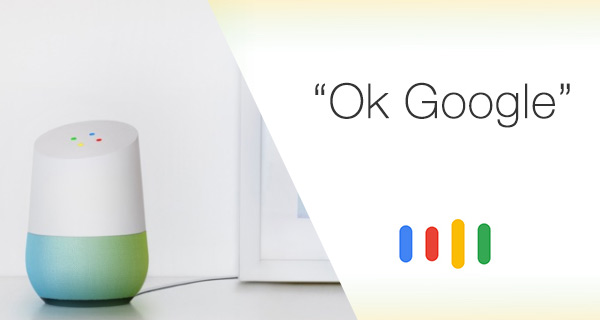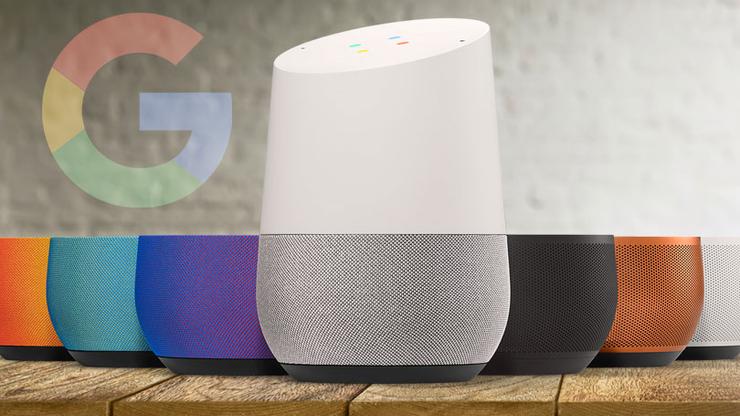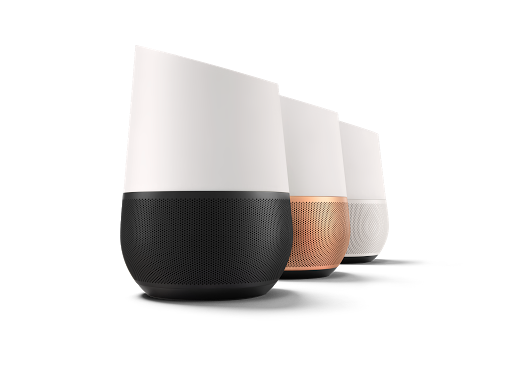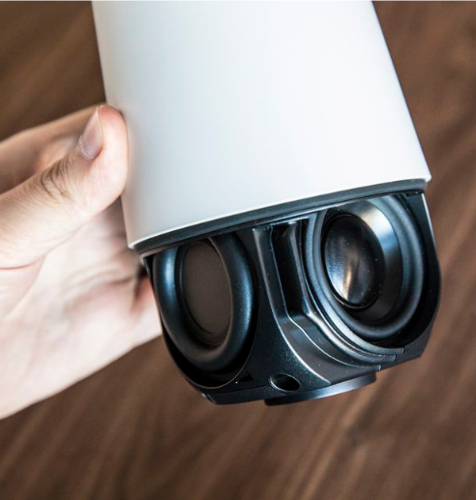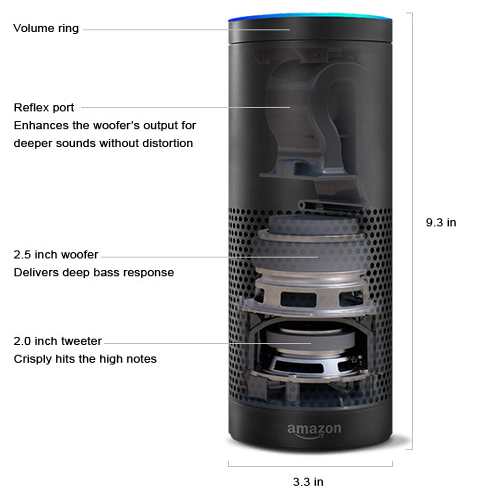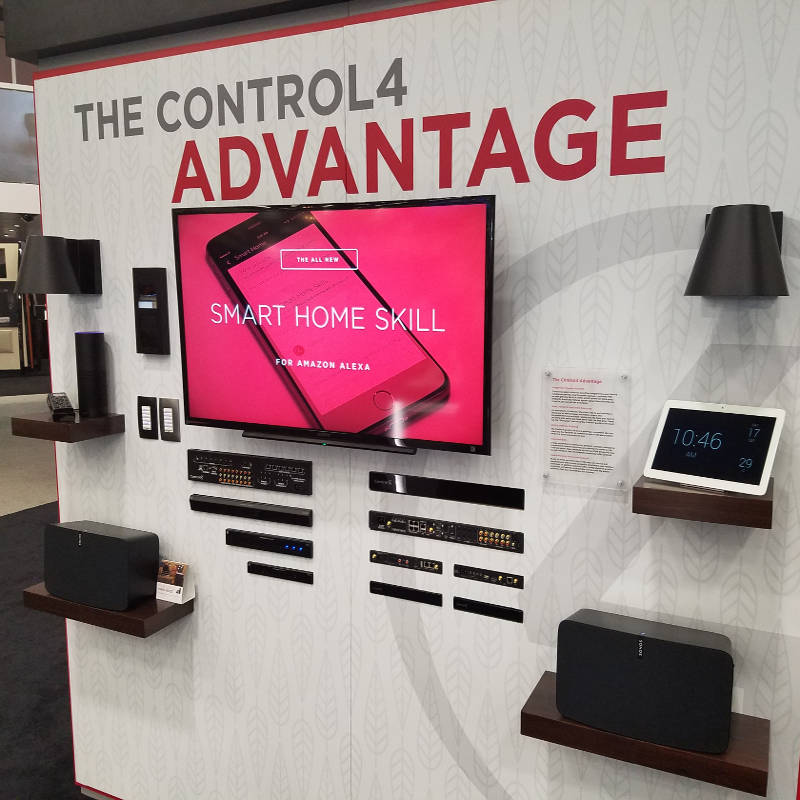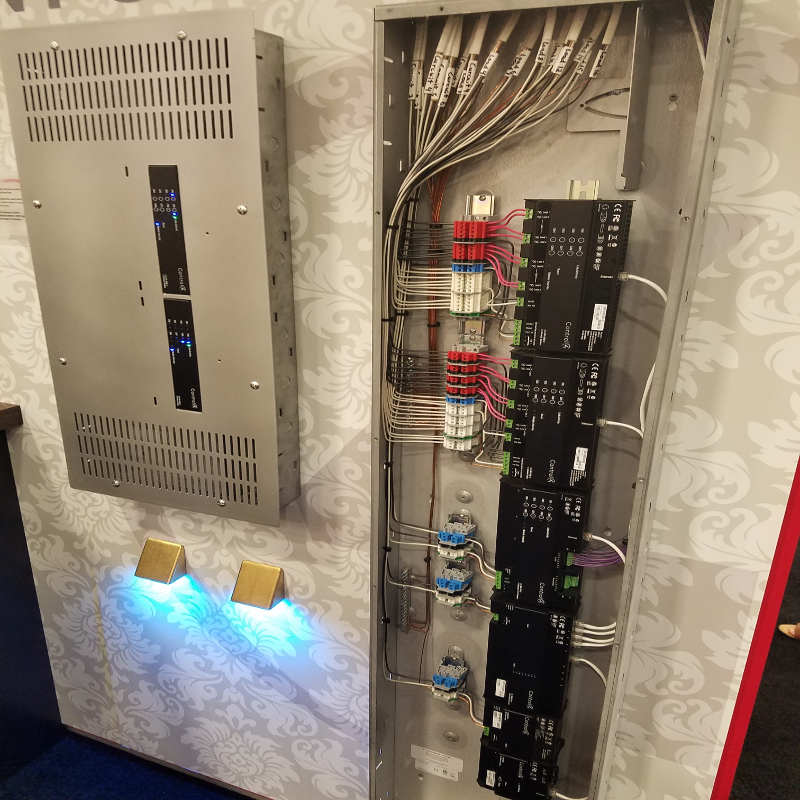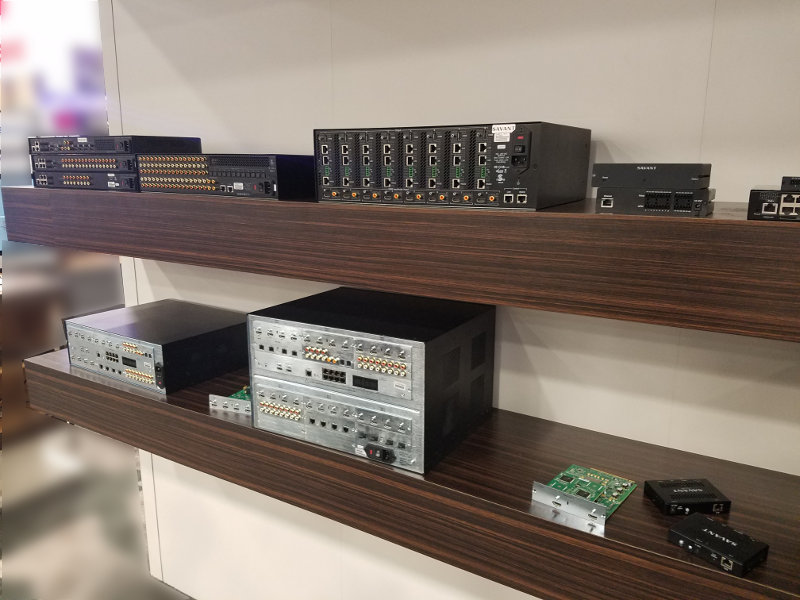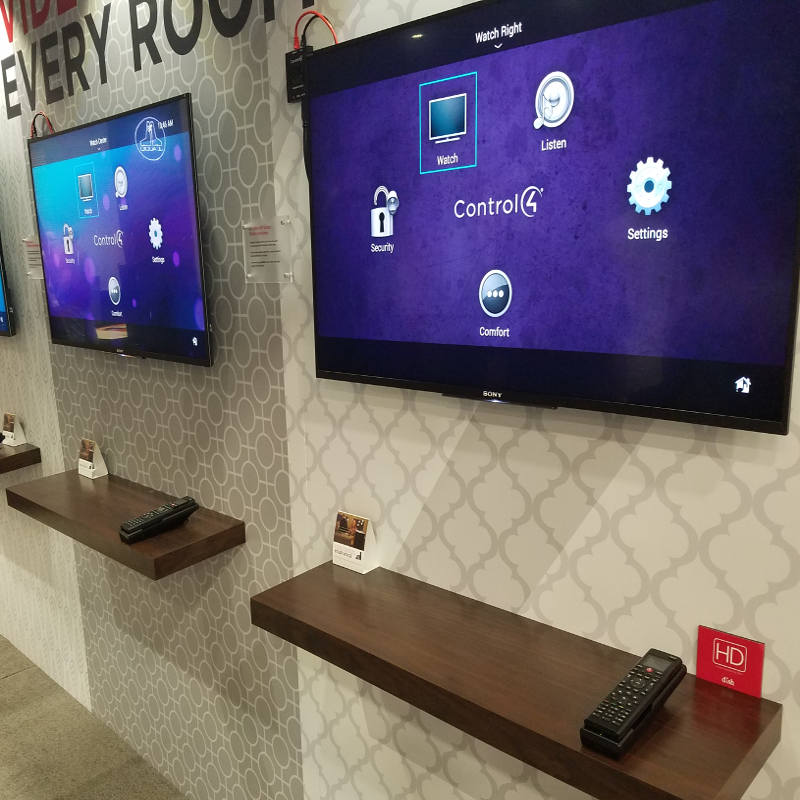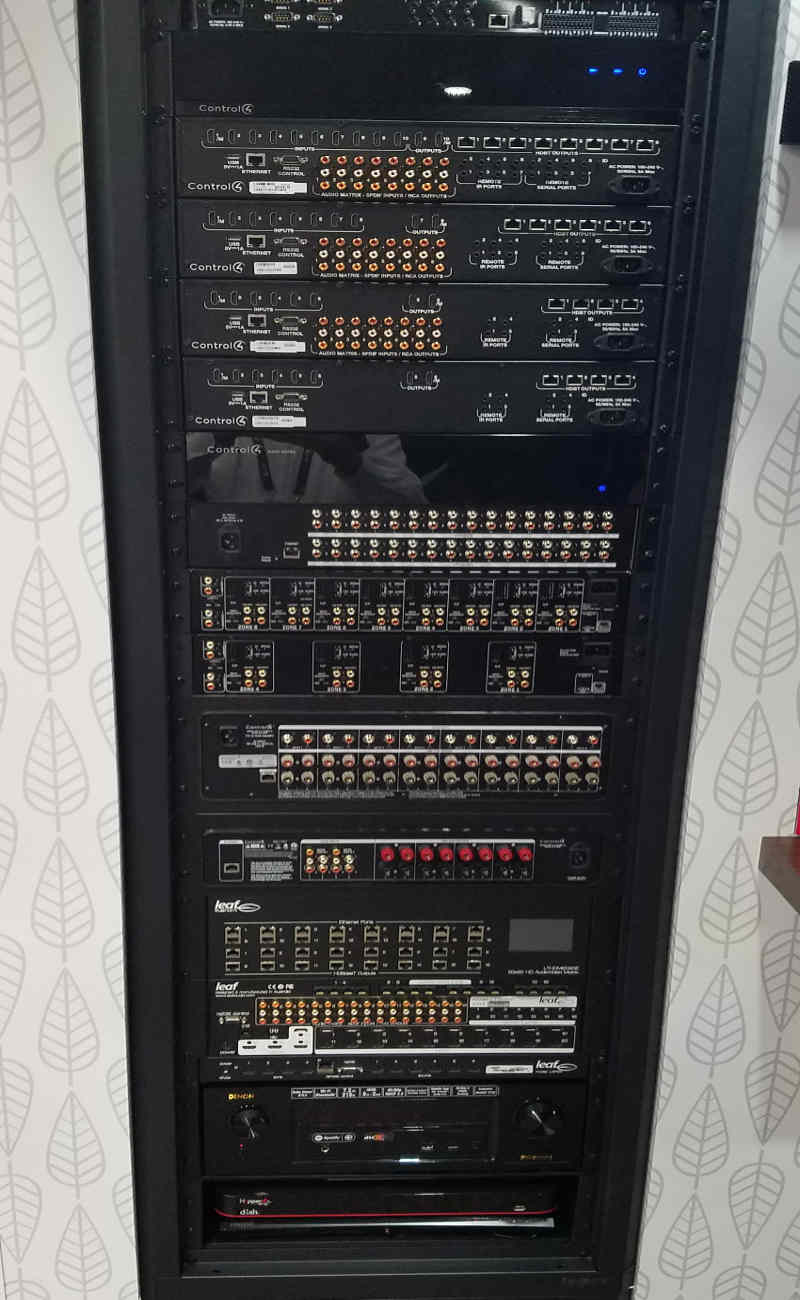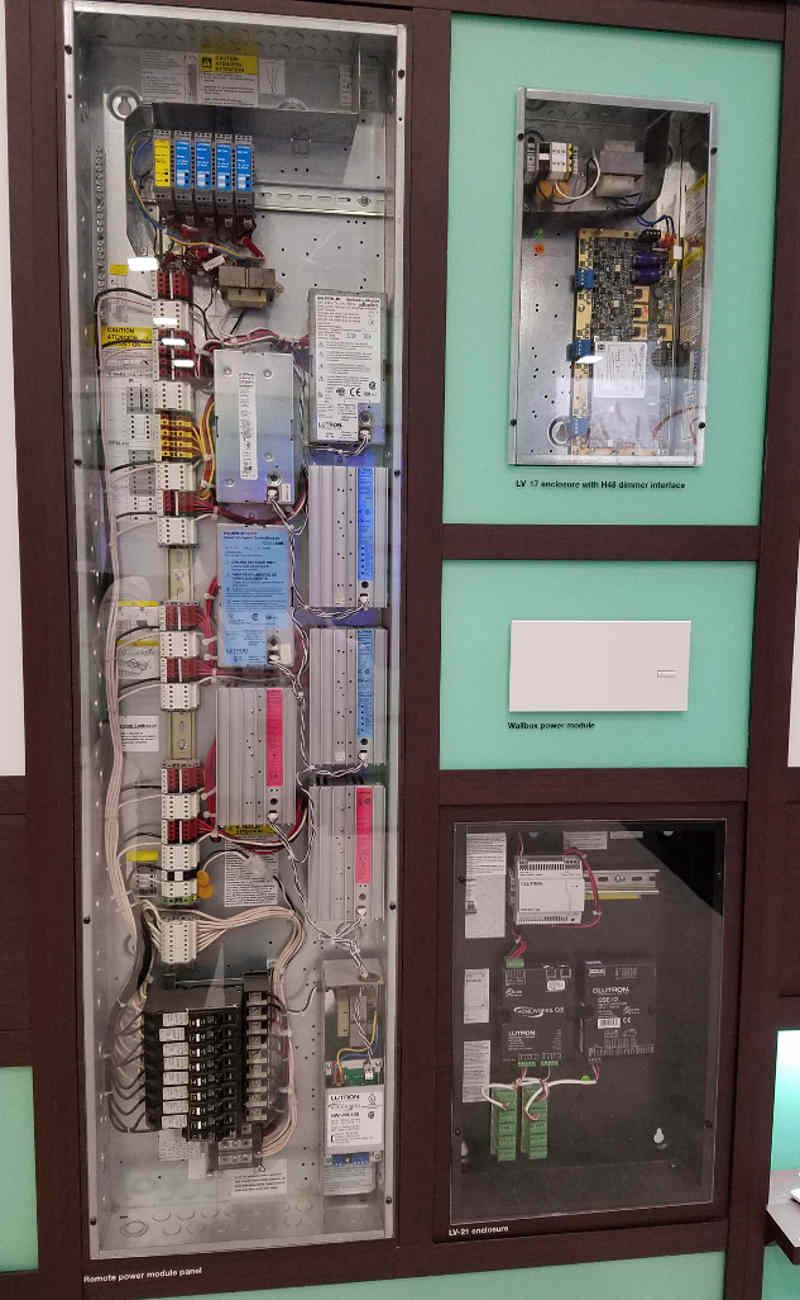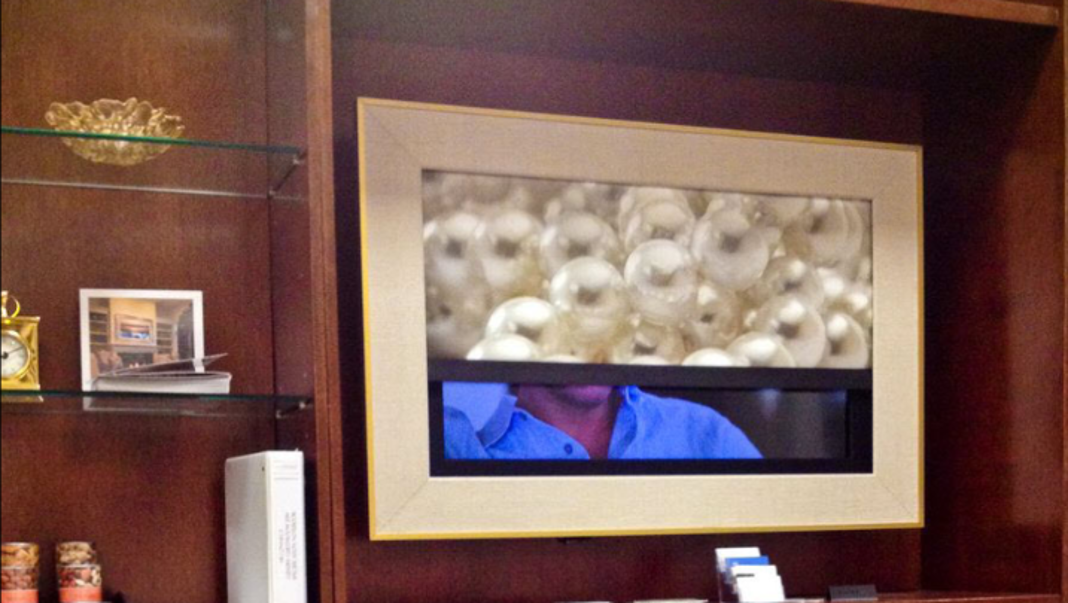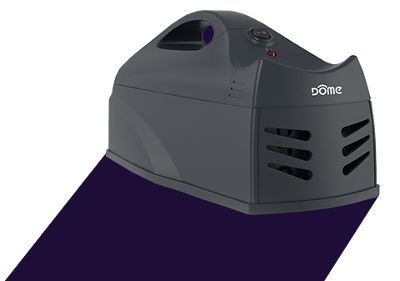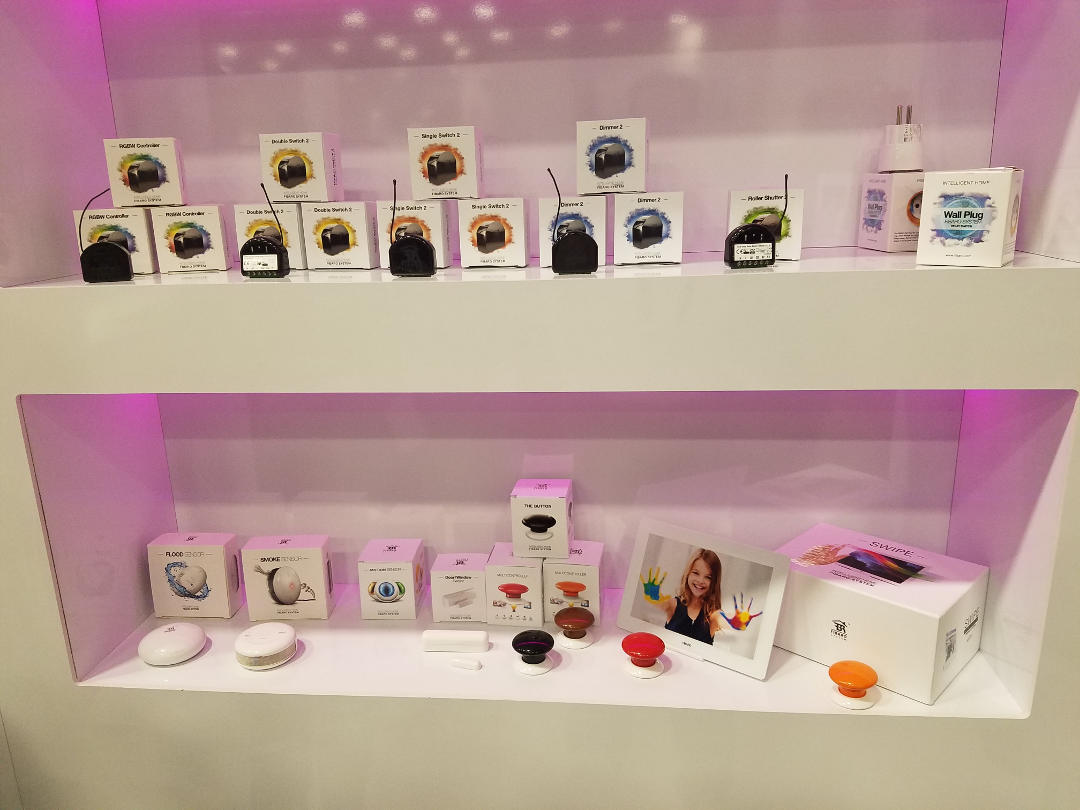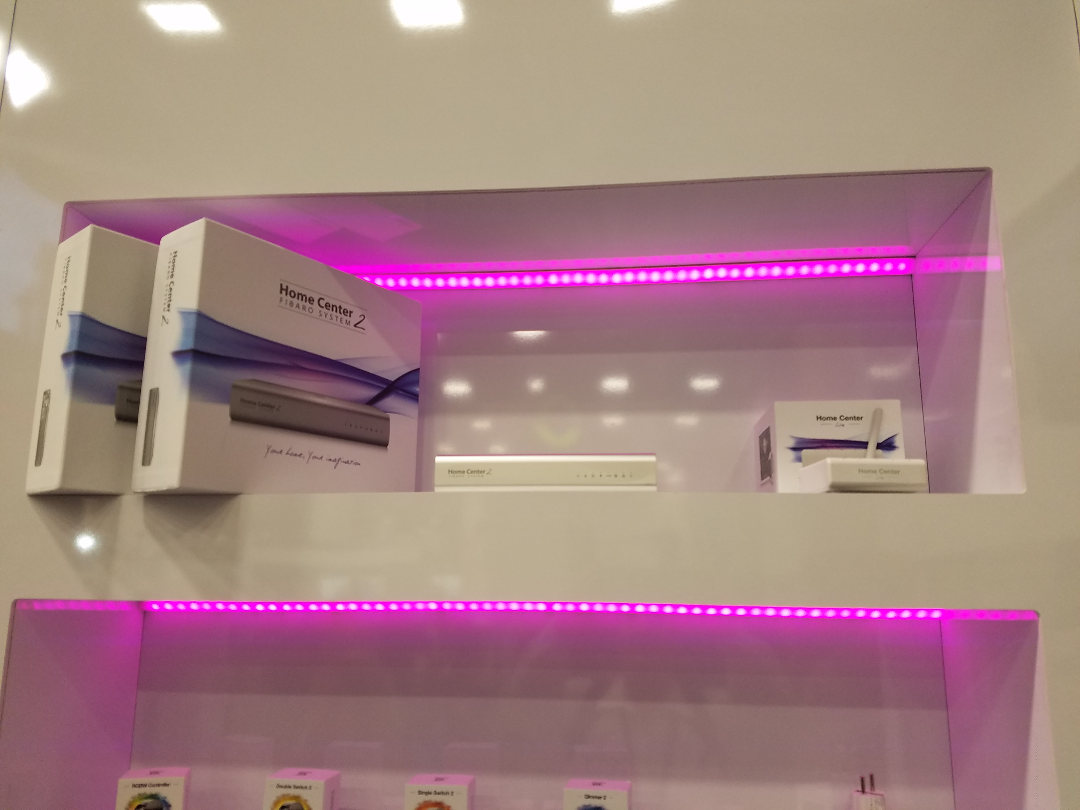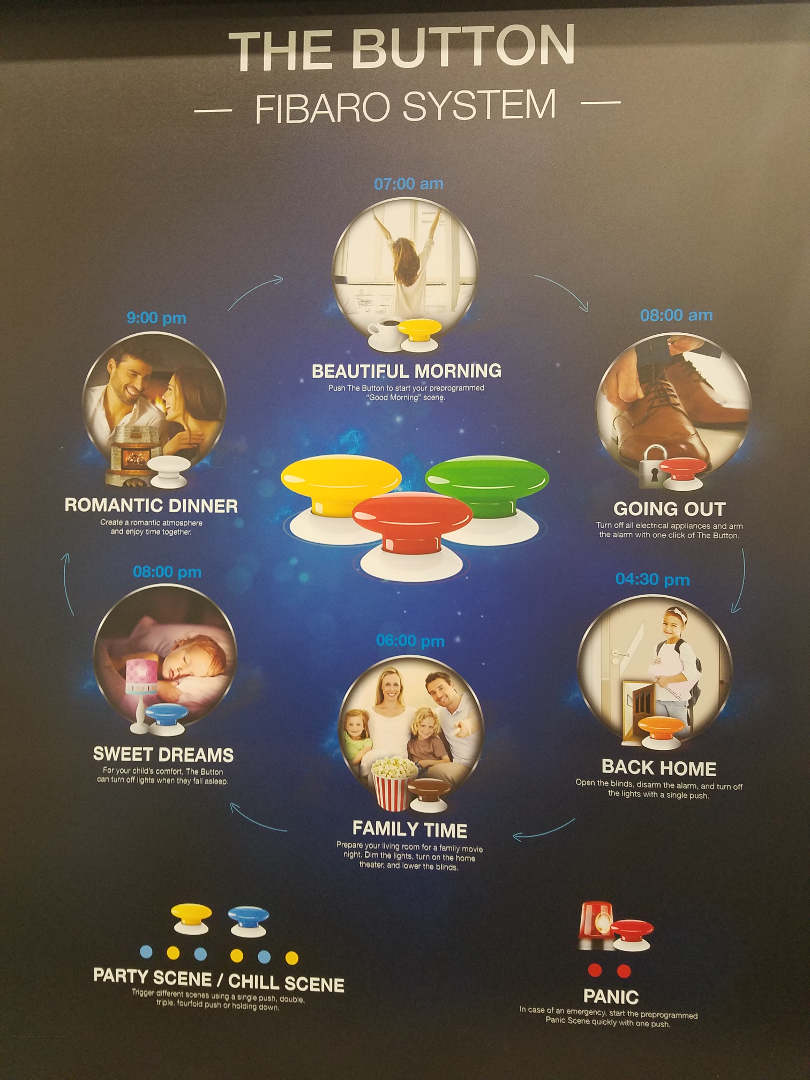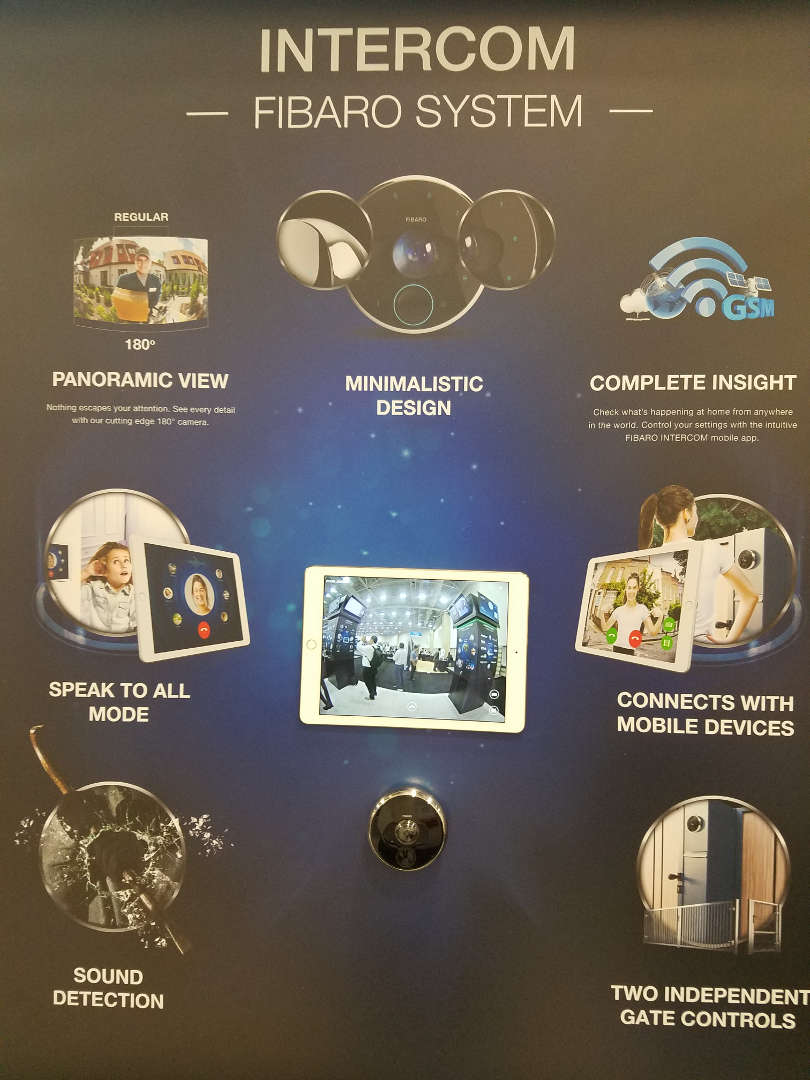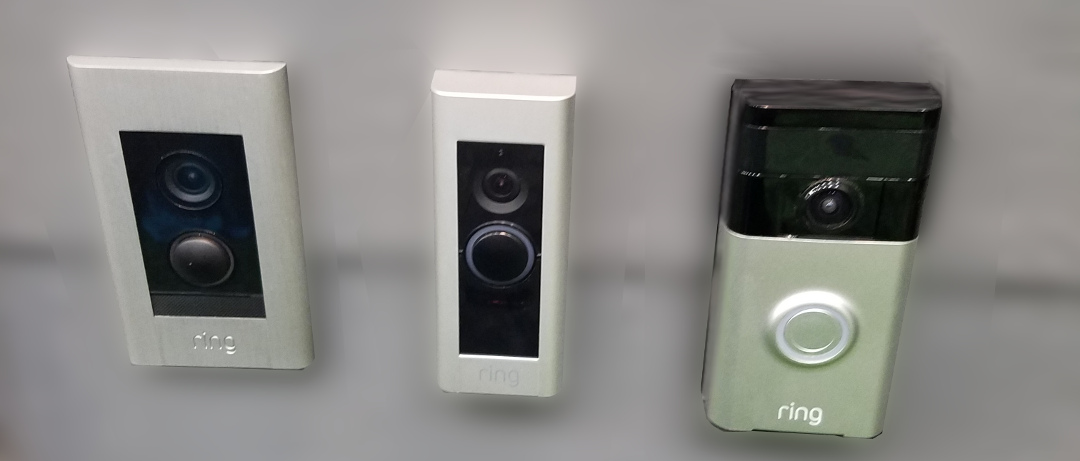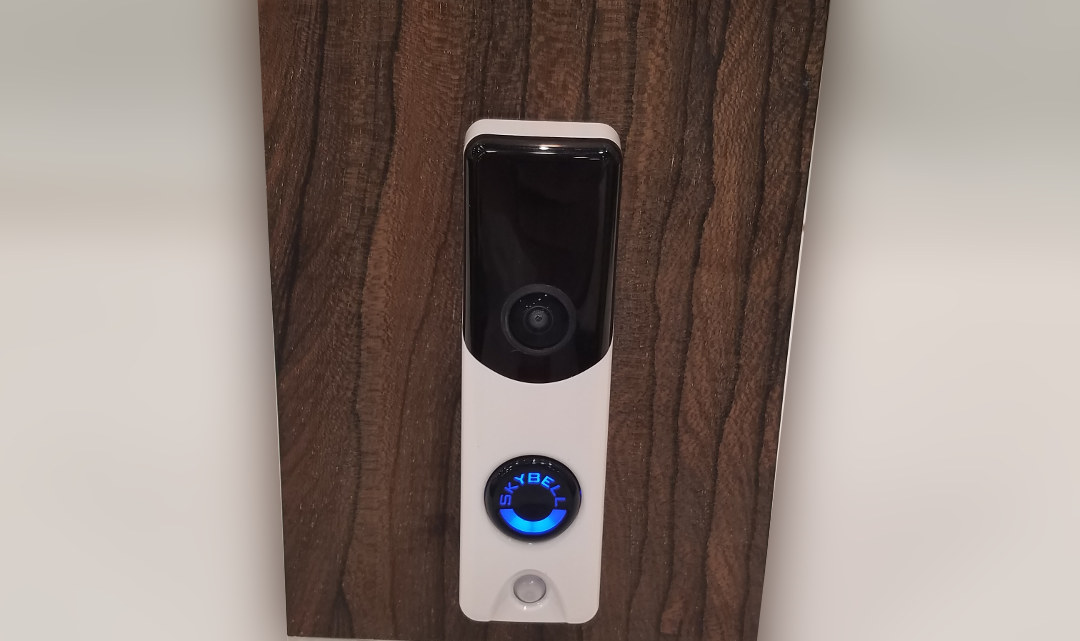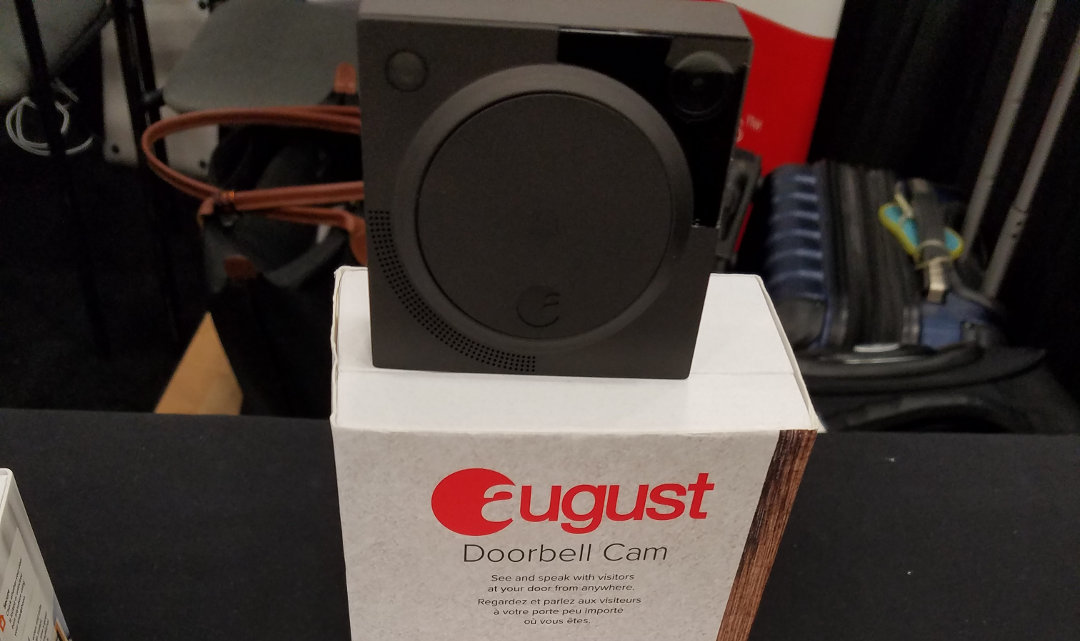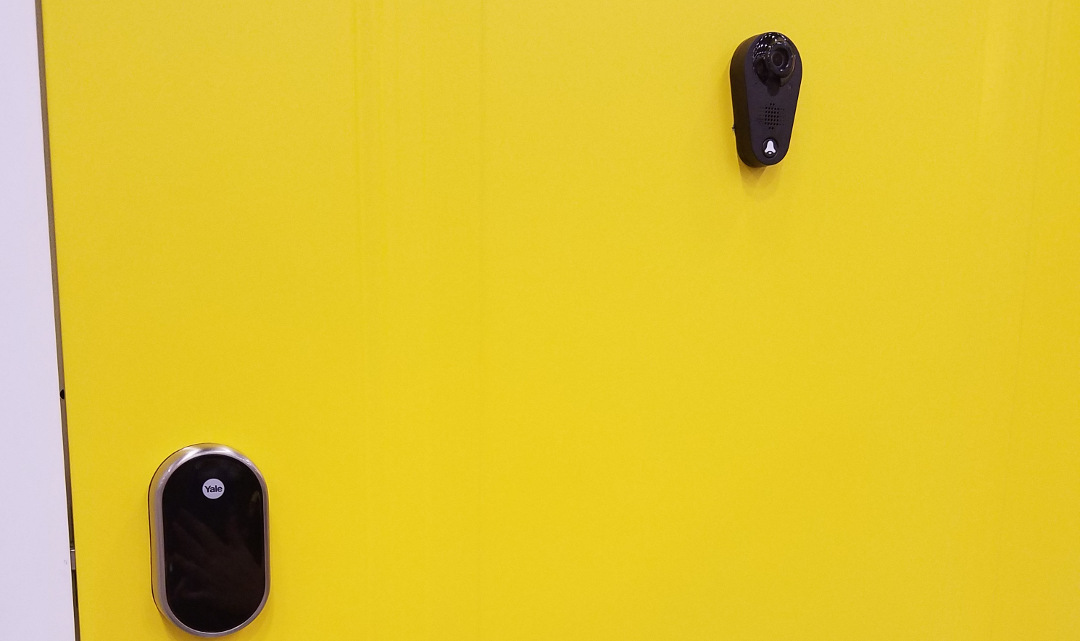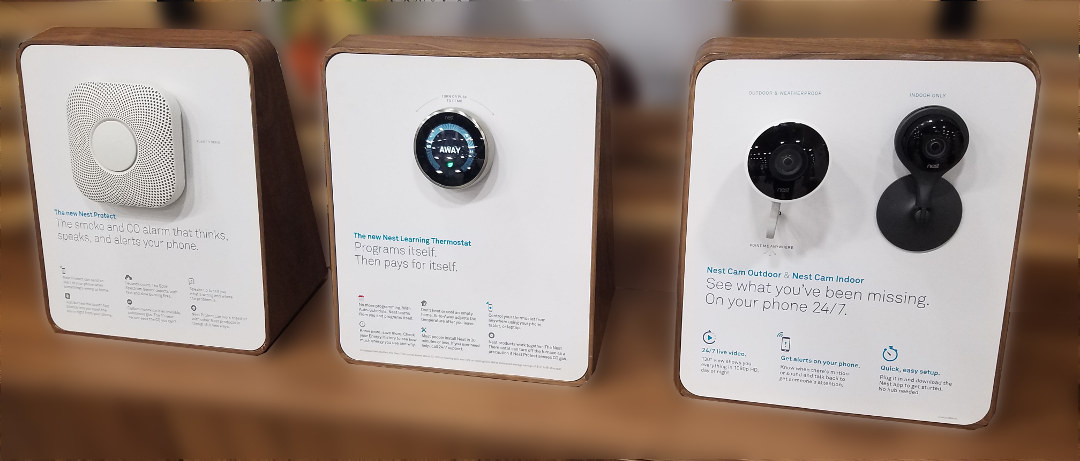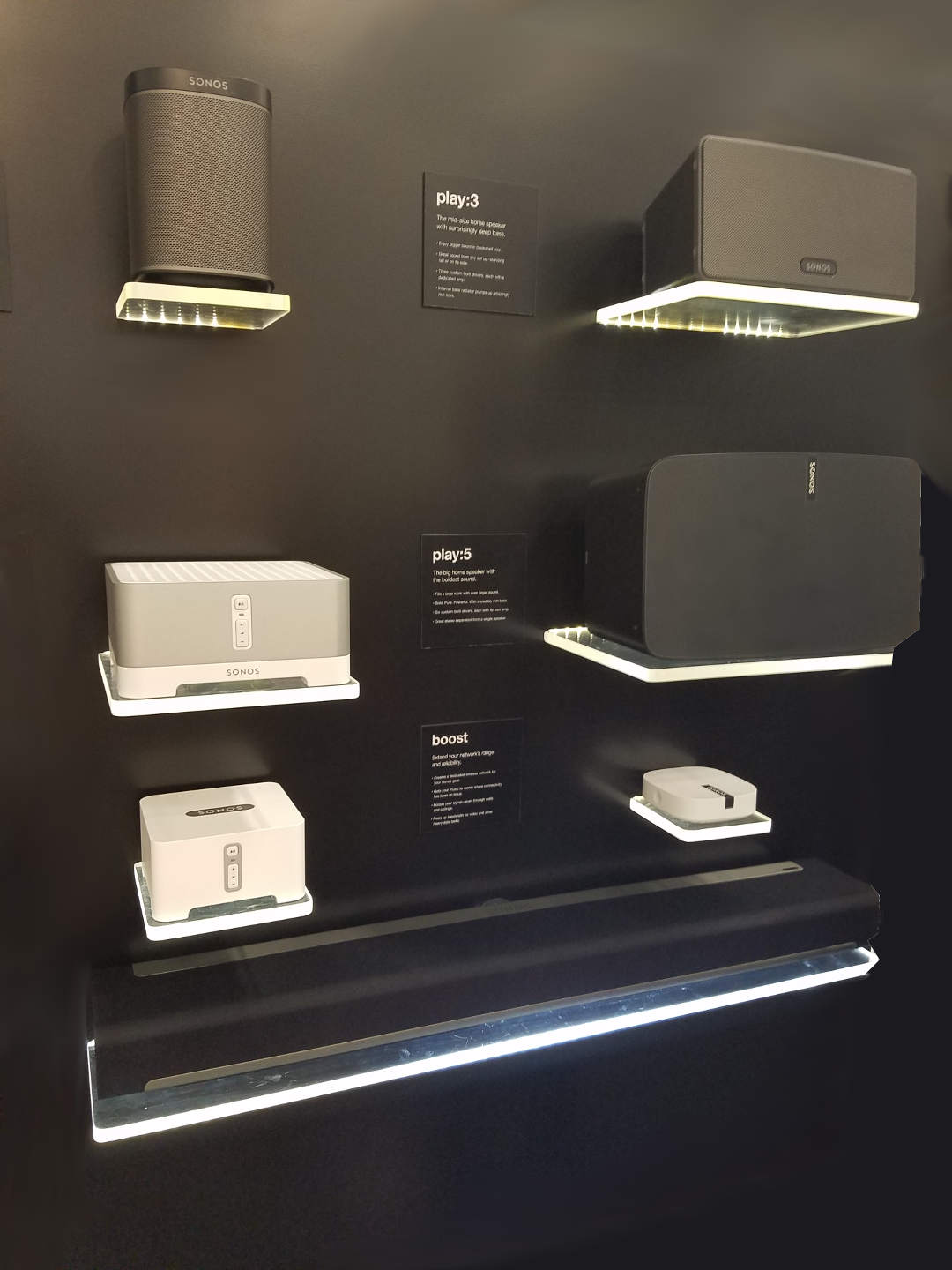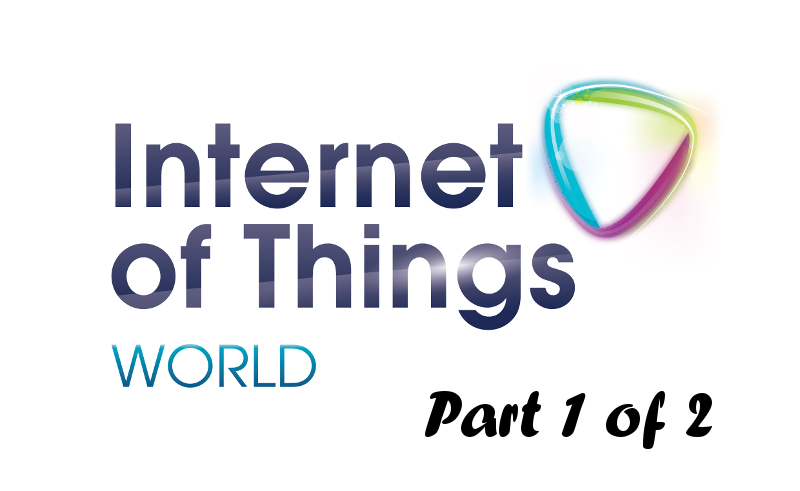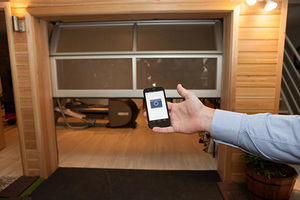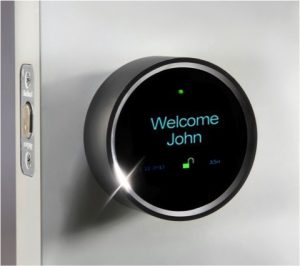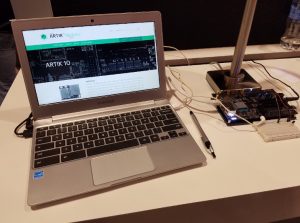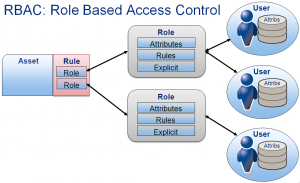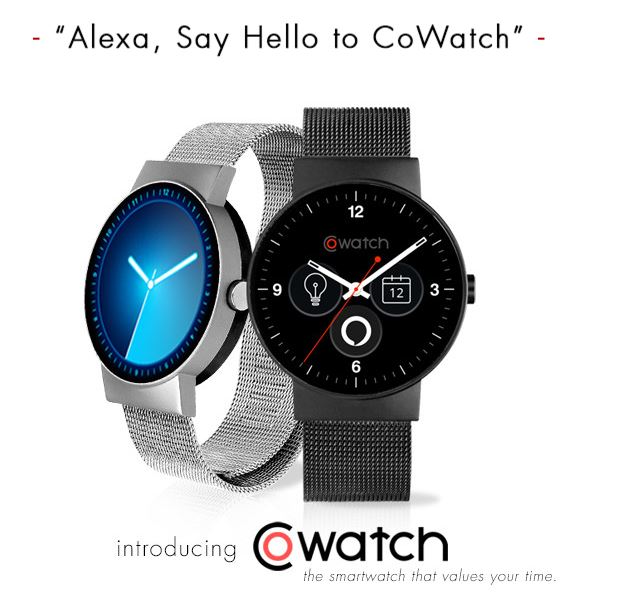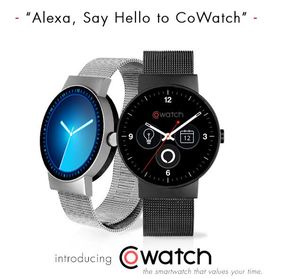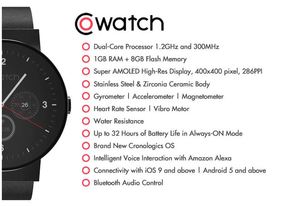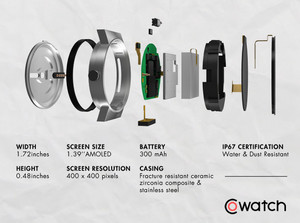
by George Pamboris | Oct 9, 2016 | Voice Control
Google finally revealed more details around their Google Home assistant product on Oct 4th 2016. They also allow now pre-orders to be placed for their official release date of Nov 4th 2016.
Google is now entering the Voice control market, after they announced earlier this year working on an “Alexa like product but much better”. At the Oct 4th 2016 Google event, where Google announced a variety of new products and product refreshes, they provided a detailed insight into the new Google Home product line.
Let’s go over their major features and functions announced for Google Home. The appearance is the first item Google addressed by offering a variety of textures and colors to chose from. Amazon Echo is also available in white now and so will be the Echo Dots, when they are released October/E 2016.
Here is a video from Google demonstrating some use cases for Google Home. Check it out.
A very important part of any voice assistant product line is their interoperability with “smart devices”. Alexa from Amazon has a huge head start, but Google is now starting and investing heavily in this area as well. Here is a comparison chart between Google Home and Amazon Alexa.
Google Home
$130
- Always listening
- Command acknowledgement
- Shopping List
- Music Streaming
- Smart Home integrations (Nest, Hue, IFTTT, Smartthings)
- Direct Music stream to different rooms via App: Yes
- Direct Music stream to different rooms via Voice: Yes
- Group Music stream on multiple Google Home devices: Yes, using Google Cast
- Attach external speakers via Bluetooth: No
- Attach external speakers via Direct-In cable: No
- Connect mobile phone via Bluetooth (A2DP): Yes
- Conversational commands: Yes
- Spatial Perception (nearest device responds): Yes, starting Nov 2016
Amazon Echo
$180
- Always listening
- Command acknowledgement
- Shopping List
- Music Streaming (Prime Music, Pandora, TuneIn, iHeartRadio, Spotify and Amazon Music)
- Smart Home integrations (Nest, Hue, IFTTT, Smartthings, Wemo, Insteon, TP Link, Ecobee and many more through skills)
- Direct Music stream to different rooms via App: Yes
- Direct Music stream to different rooms via Voice: No
- Group Music stream on multiple Alexa devices: No
- Attach external speakers via Bluetooth: No
- Attach external speakers via Direct-In cable: No, but Echo Dot supports this
- Connect mobile phone via Bluetooth (A2DP): Yes
- Conversational commands: No
- Spatial Perception (nearest device responds): Yes, starting Oct/E 2016
The Google Home Speaker seems impressive around all corners and in all directions. Once the product is released more detailed sound comparisons can be conducted.
The Alexa Speaker has proven to be quite impressive in terms of sound quality and base waves. Given the size of that product, the sound it produces is quite excellent.
In summary:
Google is releasing a major competitor to Amazon’s Echo Alexa family. It lacks in some areas, while it has an advantage in other areas. In the end the ease of use, the integration and interoperability options will drive customer adoption. In either way, competition in the market place is always good because it benefits the end consumer… us!
Disclaimer: This blog and tweets represent my own view points and not of my employer, Amazon Web Services.

by George Pamboris | Sep 22, 2016 | AV, Demonstration Video, Exhibitions, Lighting, Uncategorized
(On the left) Control 4 had by far the largest exhibitor area at Cedia 2016 but also by far the biggest ego. Making statements like “Our system never fails didn’t go well with integrators”.
(On the right) Lutron was with Savant right behind in terms of size of booth and demo area. Lutron showcased their many home automation solutions.
Another eye catcher were companies like Hidden Vision and FrameMyTV. Below is the video for a hidden weapon framed picture. Their motors are very quiet and the speed is also acceptable. They also have smaller applications for their picture frames for handheld weapons, safe storage, etc.
Watch the video below!
FrameMyTV had a smaller booth and their main attraction for integrators was their upcoming shop integration. This will allow integrators to resell the solutions under the integrator’s brand. They are even coming up with co-labelled and un-labelled material for integrators to give to potential customers.
The star of the Cedia 2016 show was something completely different and unexpected. Dome HA showcased the first ever Z-wave enabled Mouse trap. Yes, you read correctly. A mouse trap, which notifies you after the critter has been caught in that trap. Very bizarre use case and not everybody will jump on this offering.
However,this shows that there are endless possibilities for Home Automation and there will be more to come. Cedia was great and looking forward to see you guys at Cedia 2017 in San Diego.

by George Pamboris | Sep 15, 2016 | Exhibitions
Fibaro Systems from Poland has officially launched their controller hub in US. The distributor homecontrols.com is reselling the Fibaro Home Center 2 hub and will soon be offering the new upcoming Fibaro Home Center Light controller. I was able to get pictures of that new mini hub at the Cedia conference.
The new Fibaro Home Center Lite (HCL) is a complete Z-Wave home automation gateway. Don’t let its tiny size fool you – Home Center Lite is all you need to run your entire home – communicating with sensors, activating lights, appliances and heating, and even alerting you if it detects threats such as fire, flood or break-in. The Fibaro HCL is tiny – measuring just 90 x 90 x 33mm. It uses a new ARM Cortex-A8 processor to deliver high-speed performance while using very little power. HCL is the smallest Z-Wave controller available and still packs a punch big enough to manage any Z-Wave system with up to 230 devices.
The differences between Fibaro Z-Wave Controllers – HC2 and HCL The Fibaro Home Center Lite (HCL) is a very powerful Z-Wave controller packed into a tiny size. It is capable of running your entire home, but does have some import ant differences compared to the Home Center 2 (HC2). The main differences between the Fibaro HCL and the HC2 are:
Plastic casing (HC2’s has an Alloy Case)
- No LUA
- No LiLi
- No VoIP
- No Satel integration
Also notable are the Fibaro swipe product line and their latest button product line. Swipe has been available in US for some time now and there are plenty of use cases especially the hidden implementation ones, which did create a lot of attention. The button is a nice product line for places, where a physical switch or a physical scene controller doesn’t exist.
Last but not least Fibaro showcased their prototype of their doorbell aka intercom system at the Cedia conference. The size of their doorbell was a little bit bigger than Skybell and their software had some minor glitches but it was working well for a prototype. No details were shared about features and functions e.g. ONVIF support, Area masking, cloud recording, etc.
Last but not least Fibaro showcased their prototype of their doorbell aka intercom system at the Cedia conference. The size of their doorbell was a little bit bigger than Skybell and their software had some minor glitches but it was working well for a prototype. No details were shared about features and functions e.g. ONVIF support, Area masking, cloud recording, etc.
z
Ring Doorbell showcased their 3 models. The standard Ring, their Pro version and their flush mount doorbell.
z
Skybell showcased their new slim look which reminds everybody of the Ring Pro from a Look & Fell perspective.
z
August showcased their doorbell in conjunction with their door locks and their integration and collaboration between their product lines.
z
Yale showcased their different approach by using the peephole of the door for a doorbell system. Optional Z-wave modules for this doorbell will ship approx. in November 2016.
Nest showcased their product lines which consisted of their Nest Gen 3 Thermostat, their Nest Smoke detector and their Nest cameras. Their latest product line is their outdoor camera, which is only available with a hardwired connection.
Sonos showcased their existing product lines with no new products.
A different company showcased an enclosure for in-wall installs for Sonos speakers, where the enclosure was almost as expensive as the speaker itself.

by George Pamboris | May 12, 2016 | Lock, Motion and Security, Voice Control

Internet of Things World 2016 was the 3rd annual event hosted at the Convention Center in Santa Clara CA. With over 10.000 attendees and over 200 exhibitors you were able to attend a total of 15 dedicated tracks around IoT ranging from manufacturing to smart cities, connected cars, the smart home, healthcare, energy & agriculture, supply chain & logistics plus much more. This is the first of a two part report focusing on “The Smart Home” track from this event.
This report will cover new upcoming technologies, expert opinions shared at panels from various industry experts and interesting startups to look out for in the coming near future.
 A new study on year 2015 analyzed the usage of smart devices and the results are pretty interesting. The most “used” smart devices of year 2015 was the “smart garage door”. The smart garage door opener concepts implemented are ranging from adding Z-wave relays and tilt sensors to their existing home automation hub, to adding “connected” garage door openers which connect to existing home automation hubs, to independent systems with simple apps on customers’ phones, to the latest trend which is Alexa (Amazon Echo) connected garage door openers.
A new study on year 2015 analyzed the usage of smart devices and the results are pretty interesting. The most “used” smart devices of year 2015 was the “smart garage door”. The smart garage door opener concepts implemented are ranging from adding Z-wave relays and tilt sensors to their existing home automation hub, to adding “connected” garage door openers which connect to existing home automation hubs, to independent systems with simple apps on customers’ phones, to the latest trend which is Alexa (Amazon Echo) connected garage door openers.

The second most used device in year 2015 was the smart door lock. The trend for those devices is going towards ease of installation. People are shying away from having to take apart the whole door lock mechanism and replace all the guts of a door lock, to install a brand new smart door lock. The customers are leaning towards removing two screws and adding on a new smart door lock leaving the existing locking mechanism in place.
Interestingly enough, the Bluetooth managed door locks did not get the expected market adoption and instead WiFi or Z-wave door locks dominated the market. It was great to hear that “Alexa connected” was not a trend as Amazon’s Echo does voice recognition and not voice authentication which are two completely different things.

Two discussions evolved in regards to voice control of smart homes. The first one was the difference between voice recognition which is a device understanding what you are saying and executing the command versus voice authentication, where the device doesn’t care what you say but instead the devices recognizes that you are really you and not somebody else.

The second discussion about voice control was around cloud based vs offline voice recognition. On this subject the opinions were shared across the audience, that nobody wants to loose voice control over their smart home just because their internet provider has gone offline. The voice control service should always be available with the house being online or offline.

Amazon Echo aka Alexa only functions in online mode of the house. Samsung showcasing their new Artik technology at this event, had their Artik 10 device powered by Sensory as a demo. This device works in offline mode of the house and executes voice commands just like Alexa. The Artik 10 just started selling on DigiKey and is already sold out and now on back-order. Details on Artik can be found under http://www.artik.io
At $150 for the Artik 10 the price is more than double the price of a Raspberry PI 3 Ultra Kit. Supported OS versions are Fedora, Snappy Ubuntu Core and Samsungs Tizen. More importantly Artik 10 supports Z-wave, ZigBee and Brillo with Bluetooth Mesh and Weaves coming this year. Adding those protocols to Raspberry PI 3 will certainly increase the price significantly. The expectation of people is that comparisons will be made but one major advantage of Raspberry PI over Artik 10 is their developers network. Artik will launch their Apps platform for developers within 3 months from today and people are already lining up to join that initiative. Artik will charge a developer fee just like Apple does to join their Apps platform.

As a live demonstration the Samsung Artik team showed a robot being voice controlled by their sensory voice control chip running on the Artik IoT framework. They also showcased a security system which included a home automation controller hub, motion sensor, etc all being controlled by Artik.
The same issue applied here in terms of voice recognition versus voice authentication. With that said the industry is aware of that problem and a variety of companies are already talking about on how to address that issue. One company joined a panel discussion on smart homes and addressed this exact problem with their software by focusing on voice authentication.
Talking to that company called Knurld was very interesting as many voice authentication solutions require a certain length of words or phrases being spoken before a person can be positively identified. The most common length for this procedure is about 10 to 15 seconds. However, in the smart home world the average length of any command set is about 3 to 4 seconds max which is what Knurld is targeting. Another aspect is voice training of the software to enable any voice authentication which can be quite lengthy where Knurld requires 30 seconds of training. Details on Knurld can be found under http://www.knurld.io
Companies like Google, Amazon and other voice recognition focused companies will tackle this sooner than later as customers’ demands drive innovation. A discussion with an Amazon Echo developer went into the right direction and hopefully find its way to their product enhancement list.

The discussion was around voice authentication and authorization. The concept of Role Based Access Control (RBAC) is very well known in the IT (not IoT) world but not so much in the voice control world… yet. The use case around this became obvious where the home owner defines certain roles and maps household members to those roles.
As an example the husband and wife have superuser rights while the kids are only allowed to use certain devices mapped to their roles. Guests at home are only allowed e.g. to control lights and nothing else. This is where the future should be going combining voice recognition with voice authentication and then voice authorization.
More to come in part 2 of this IoT World report. Stay tuned.

by George Pamboris | May 3, 2016 | Wearables
A Chinese company is about to release a new smartwatch which is integrated with Alexa from Amazon (Echo) called “CoWatch”. Here are the details published from their Indigo crowd funding page.

Speak, and CoWatch will listen. With a built in dynamic speaker – and as the first smartwatch to integrate Alexa, Amazon’s cloud-based voice service, you can ask for a traffic report, control connected devices, make a phone call to a friend, order a taxi to your home, pay your bills, and so much more. As long as your CoWatch is connected to a WiFI network or to your phone with a data connection, Alexa will be on!
Your smart home is at your fingertips. The power of Bluetooth 4.1 and cloud connectivity lets you dim the lights, check on your car, turn up the heat, and interact with the devices, products, and services that matter to you most.
Friends encourage friends to stay healthy. Be proactive and let CoWatch sweat the small stuff. CoWatch can track your calories burned, count your steps, even monitor your heart rate after and during a workout. Using a nine-axis accelerometer, digital compass and gyroscope, as well as heart rate sensor and vibro motor, CoWatch can help you keep track of every move.

Maximize efficiency and connect with a simple touch. Send a quick response through text message, check your emails, review your calls on your phone, connect to your favourite streaming service, and turn on your favorite song – CoWatch can do it all.
CoWatch unites classic watch design with state of the art technology. Elegantly constructed and at a price point that competes with other luxury brands, you have a choice between carbon black or mineral silver stainless steel, with a fracture-resistant zirconia composite ceramic body for excellent wireless signal (2.4G 802.11 b/g/n). The vivid super AMOLED 400 x 400 high-resolution touch screen has an interchangeable and reactive watch face, catering to your mood, experience, and look, from day to night.
This is definitely a new concept given that Siri from Apple and Google NOW are already in smartwatches. The question is how useful or beneficial this concept will be. Reading their funding campaign made me excited about their product as this really sounds very interesting and then I started thinking about my personal application of that product.
From a personal perspective I bought the Gear 1 years ago and I was able to control my home with Google NOW until Samsung decided to kick Android OS out and replace it with their own OS called Tizen. That integration stopped working after the change of OS but other options became available e.g. IFTT, etc. The point was to be able to have your home automation at your fingertips and/or use voice with your watch to control your home.
 Now, let’s look at CoWatch with this in mind. You can use CoWatch to get Alexa functionality at your wrist. I already have 2 Alexa’s in my home and I can use my voice to control my complete home. There are some rooms where using Alexa via the watch might be useful e.g. the Garage, Laundry room, etc but personally I don’t see the benefit of having an Alexa on my wrist while being at home as I can simply speak louder and Alexa will pick it up anyways. Alexa’s voice recognition range is simply awesome. This might be different if you would only have one Alexa for your whole home and you want to control your home from every single room at any point in time.
Now, let’s look at CoWatch with this in mind. You can use CoWatch to get Alexa functionality at your wrist. I already have 2 Alexa’s in my home and I can use my voice to control my complete home. There are some rooms where using Alexa via the watch might be useful e.g. the Garage, Laundry room, etc but personally I don’t see the benefit of having an Alexa on my wrist while being at home as I can simply speak louder and Alexa will pick it up anyways. Alexa’s voice recognition range is simply awesome. This might be different if you would only have one Alexa for your whole home and you want to control your home from every single room at any point in time.
The other use case would be to be able to control your home while on the road but in that case you already have your smart phone with your favorite home automation application and if you went all the way, you already have voice control on your phone for your smart home like Tasker + AutoVera or the Siri Integration with Vera.
- At home your cell phone might not be next to you so your watch voice control might become handy but again Alexa has a large voice recognition range already.
- Not being at home you have your cell phone most likely on you and with the Siri or Google NOW integration you already control your home via voice.
Let’s see how their product will get accepted in the market especially with Alexa’s unprecedented growth and given that Amazon has published APIs for integration other smartwatch vendors might follow.
Disclaimer: This blog and tweets represent my own view points and not of my employer, Amazon Web Services.
